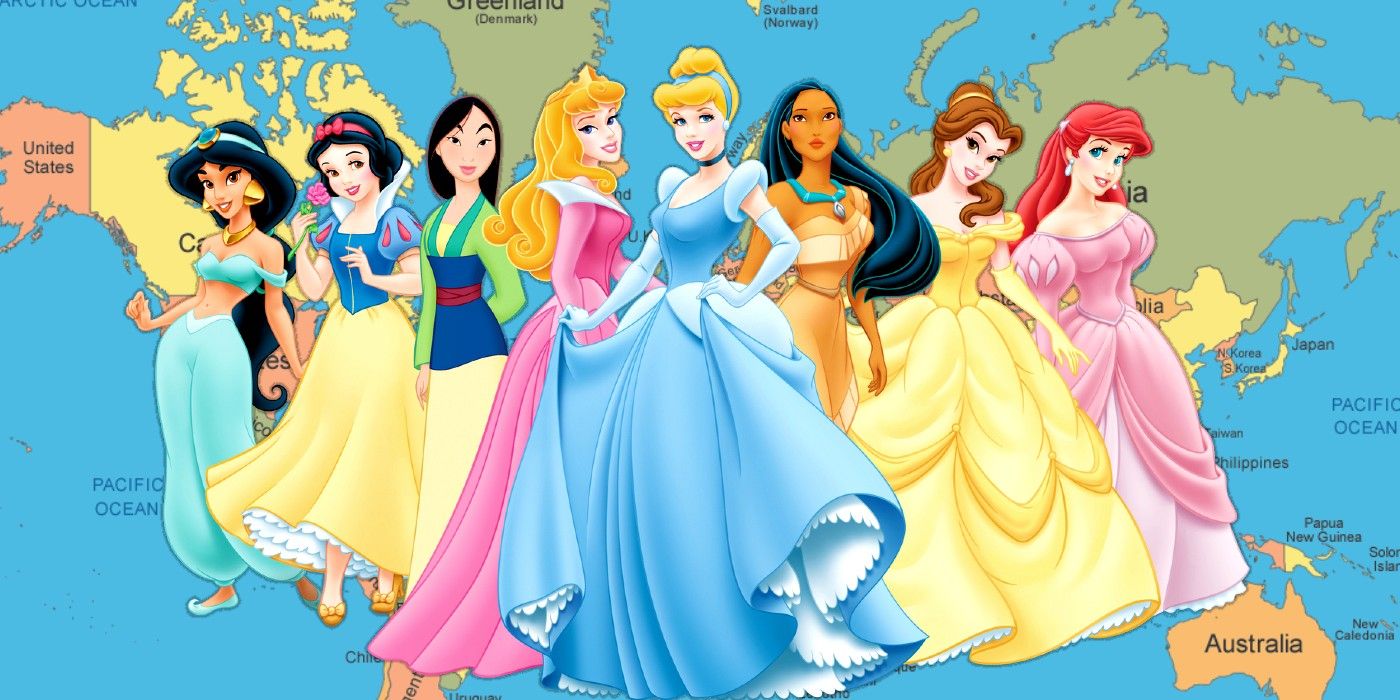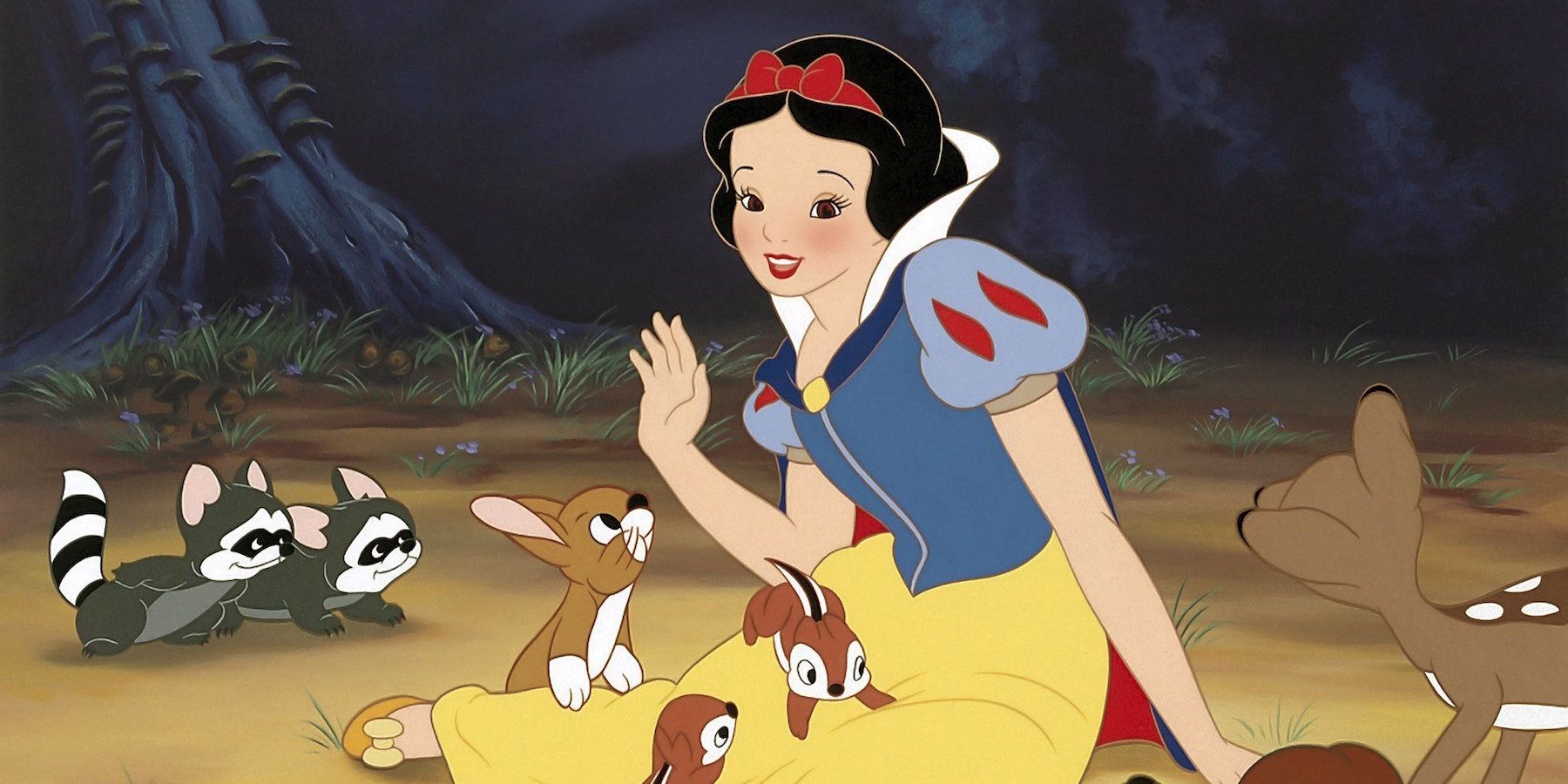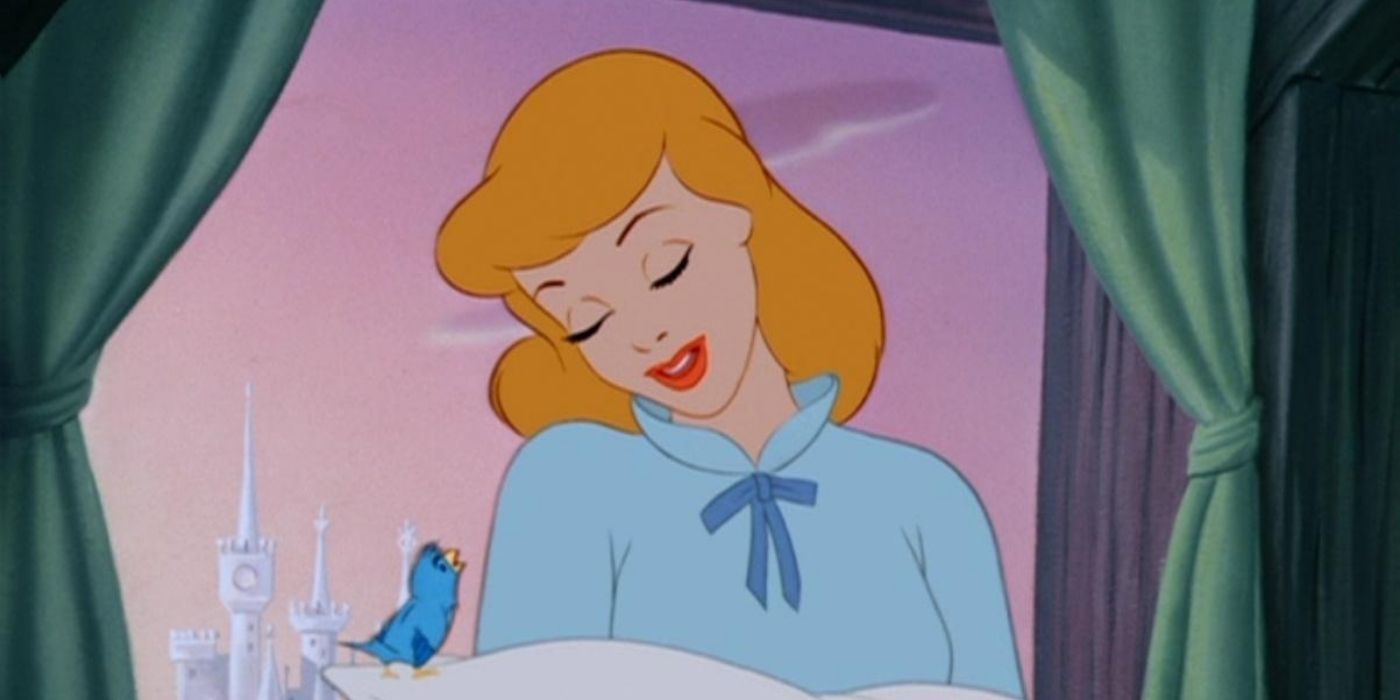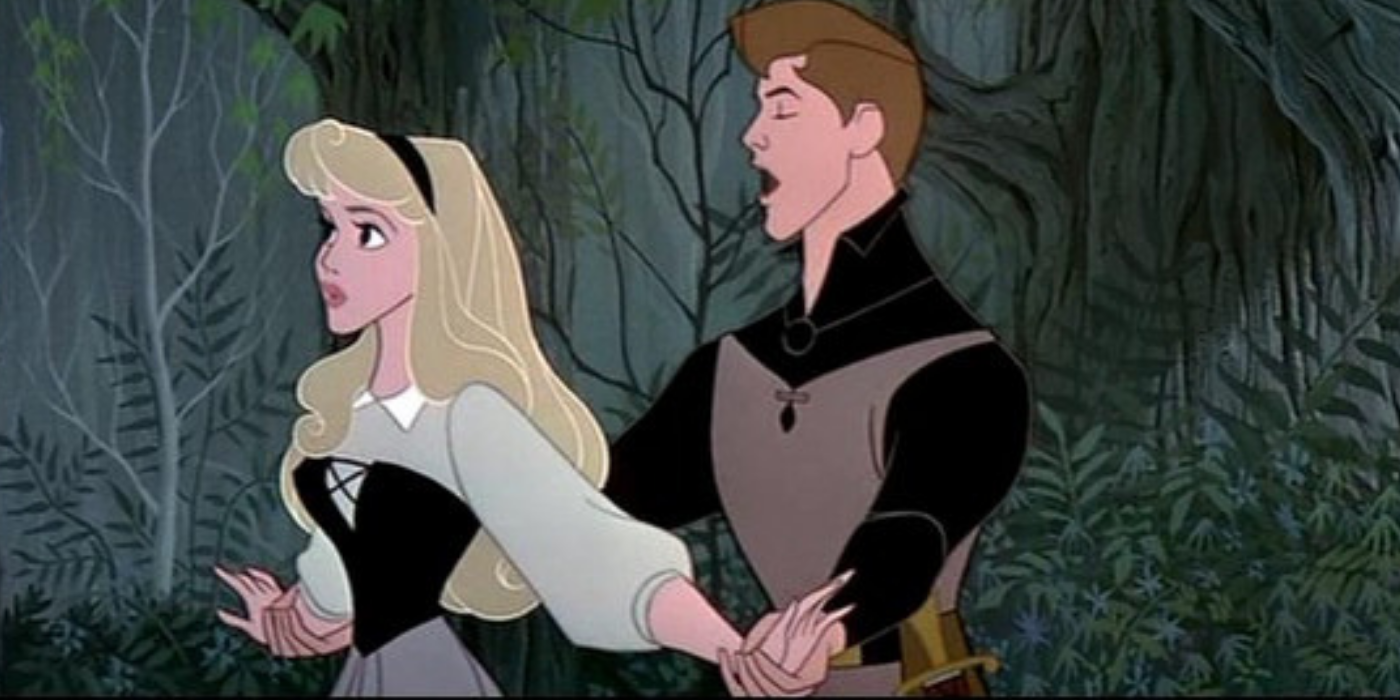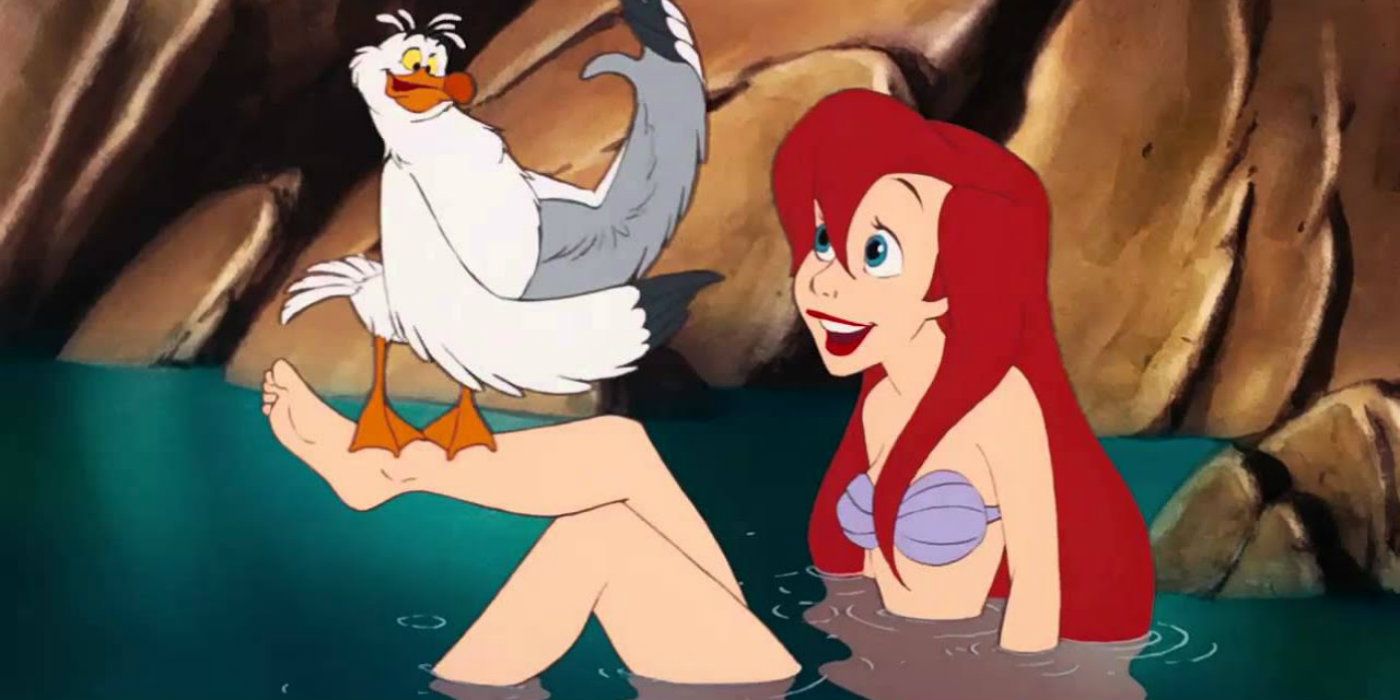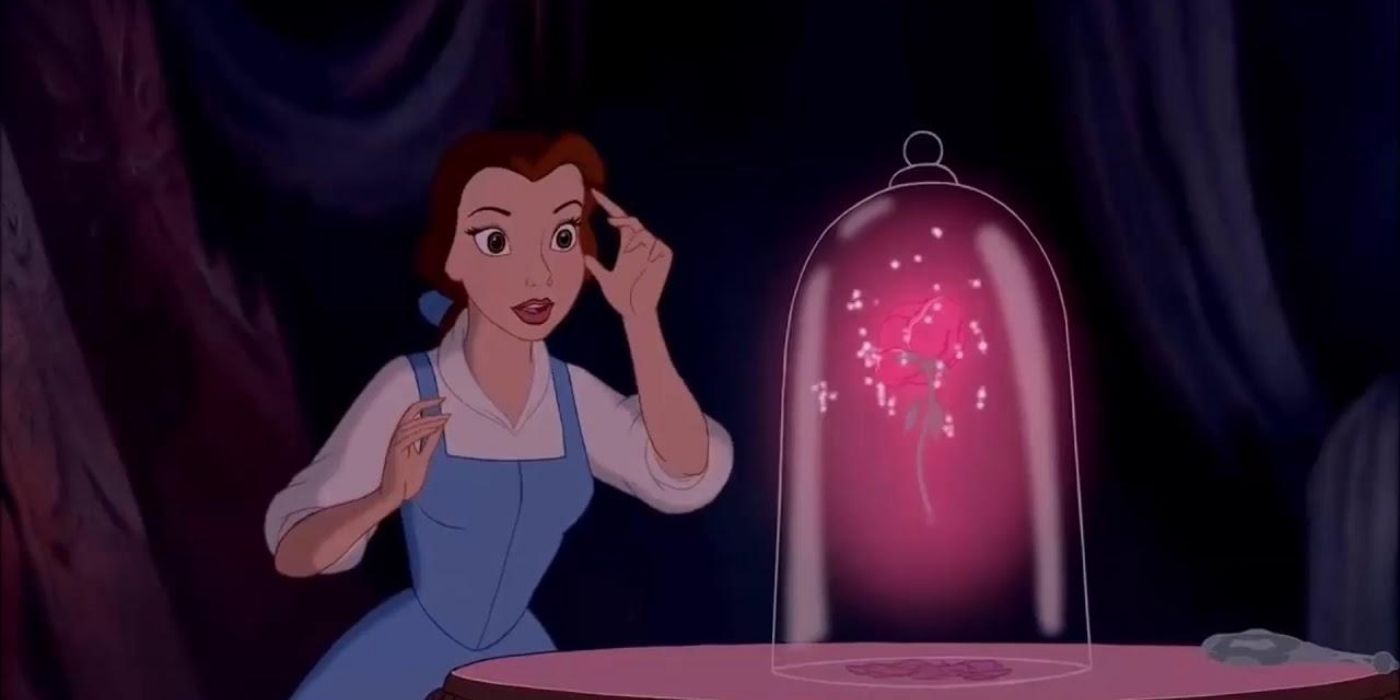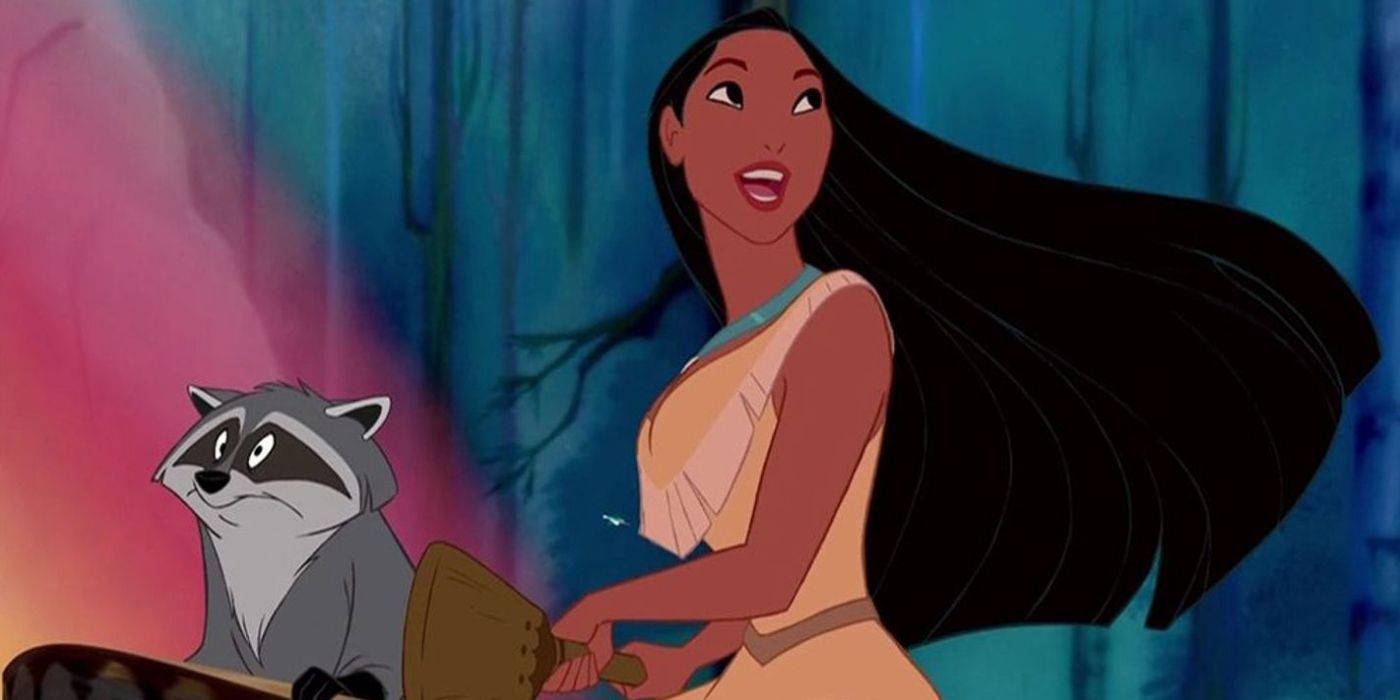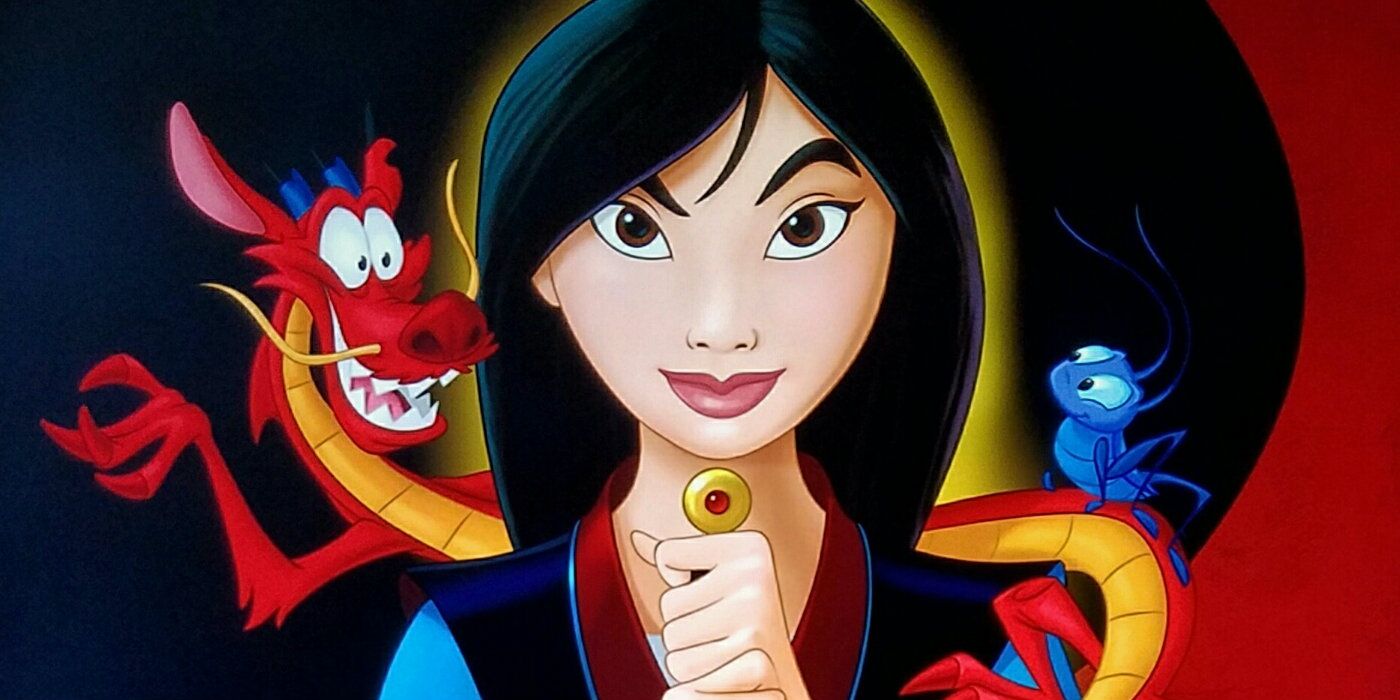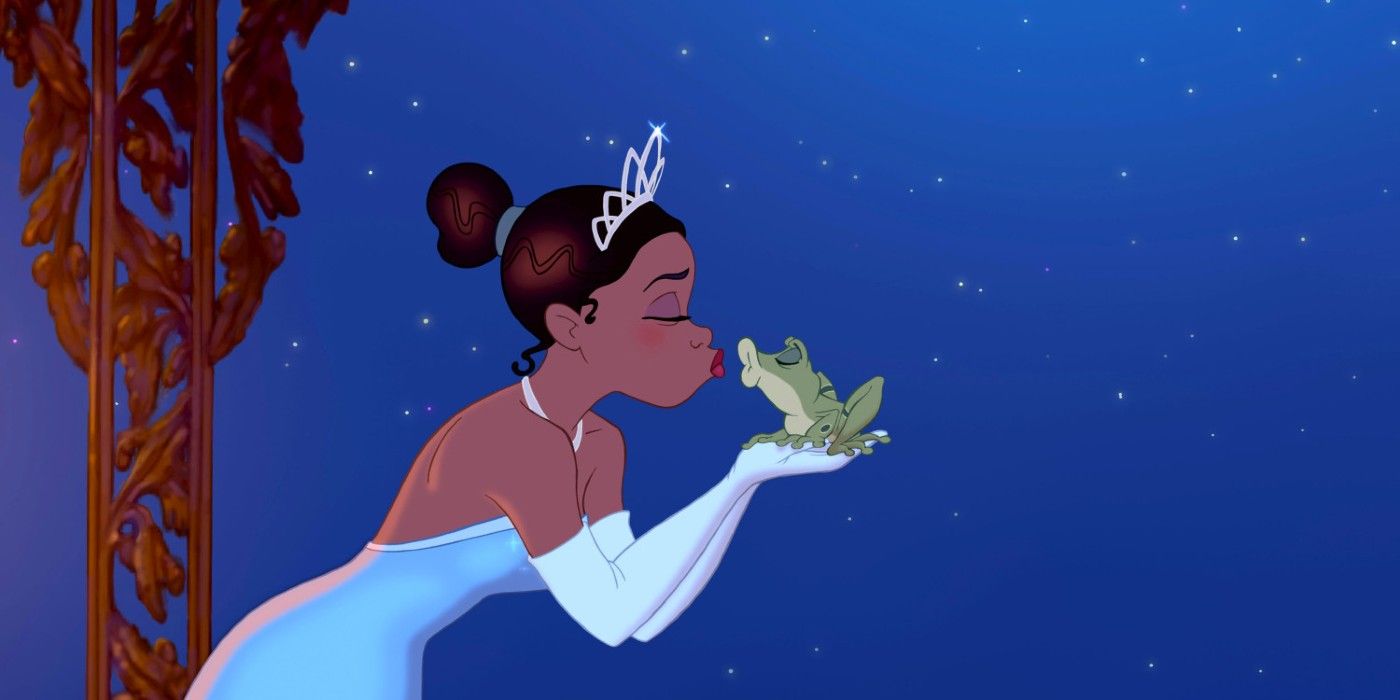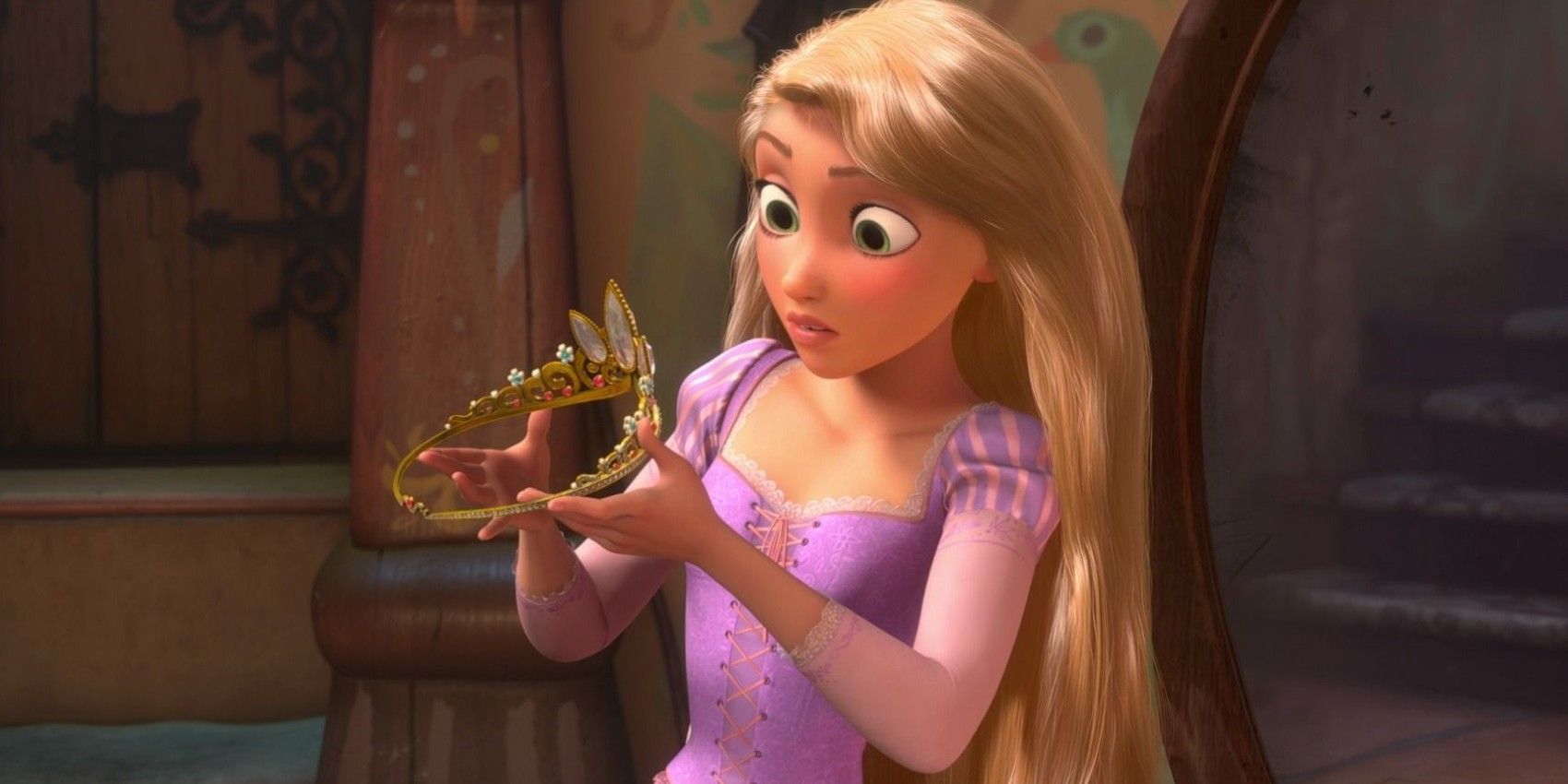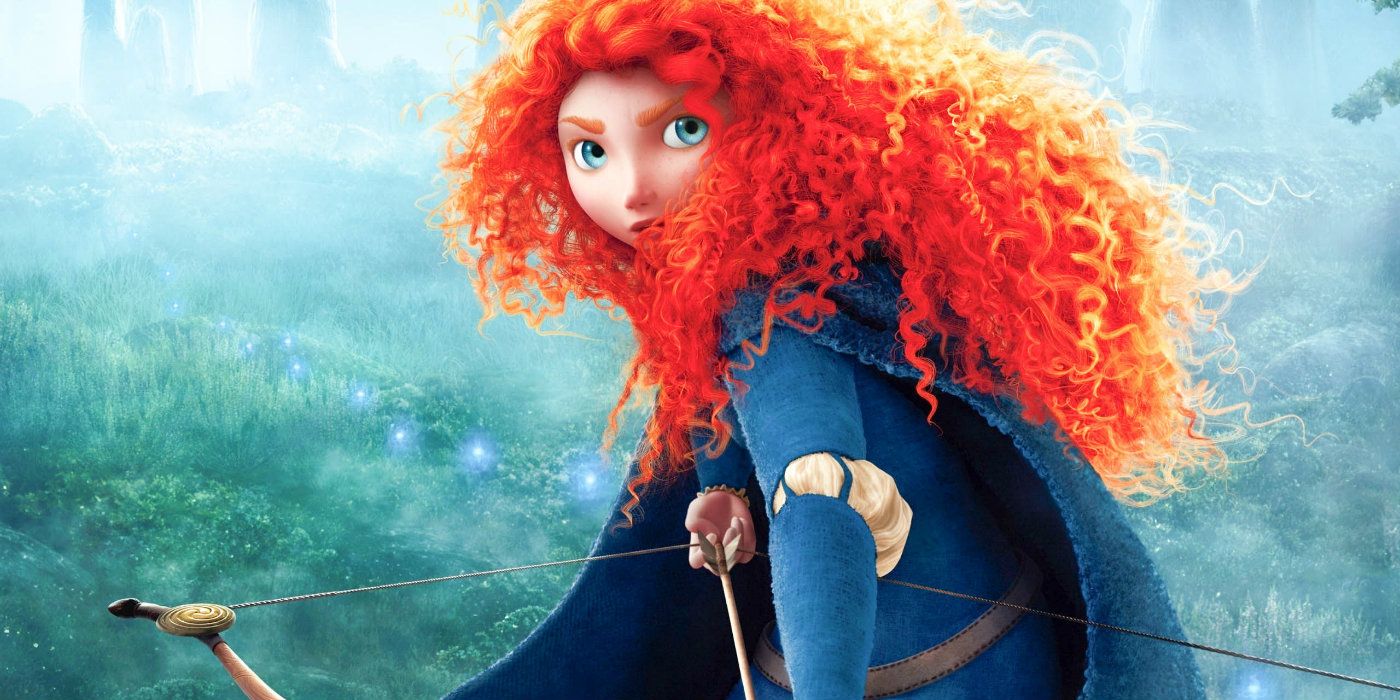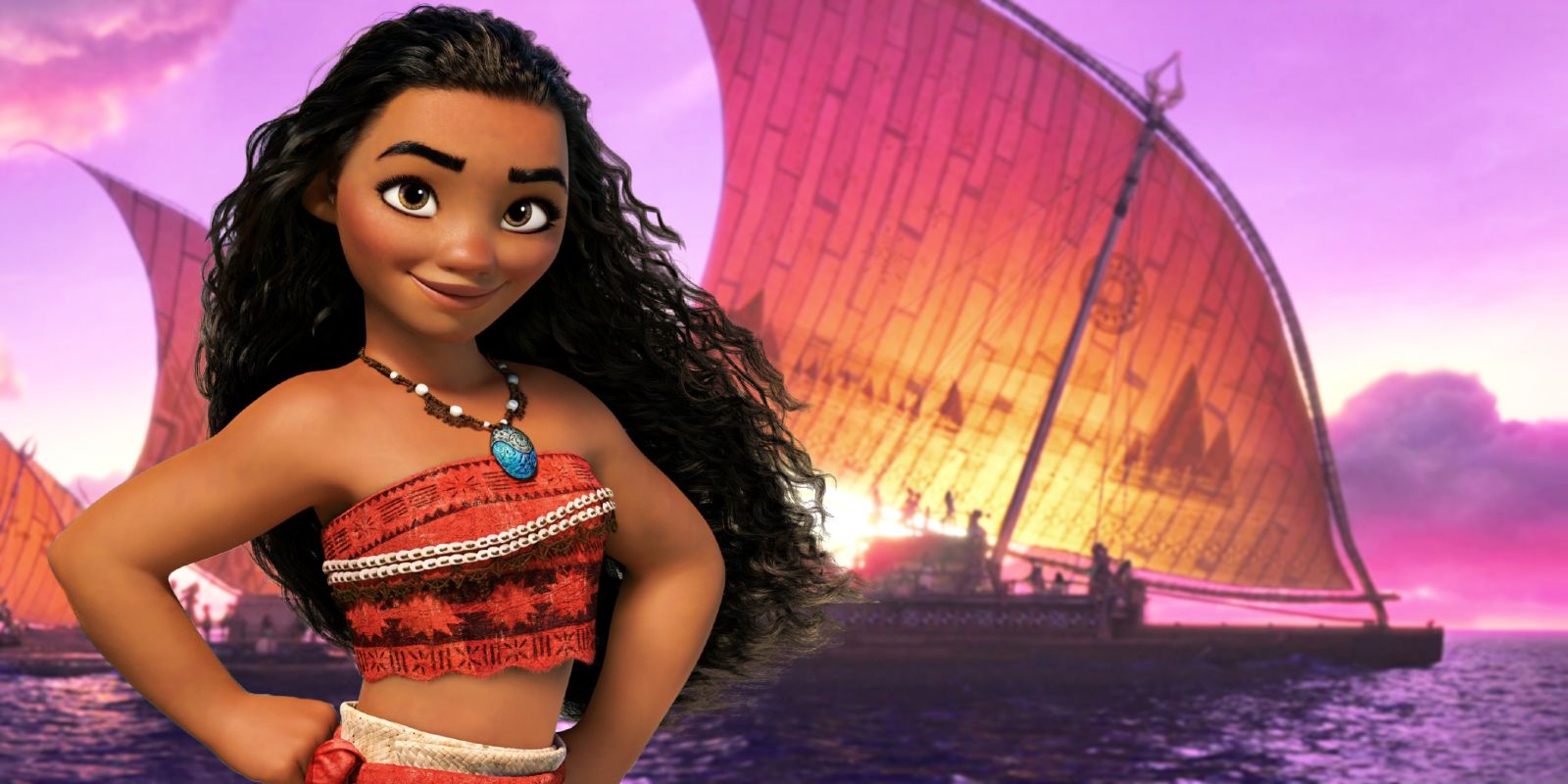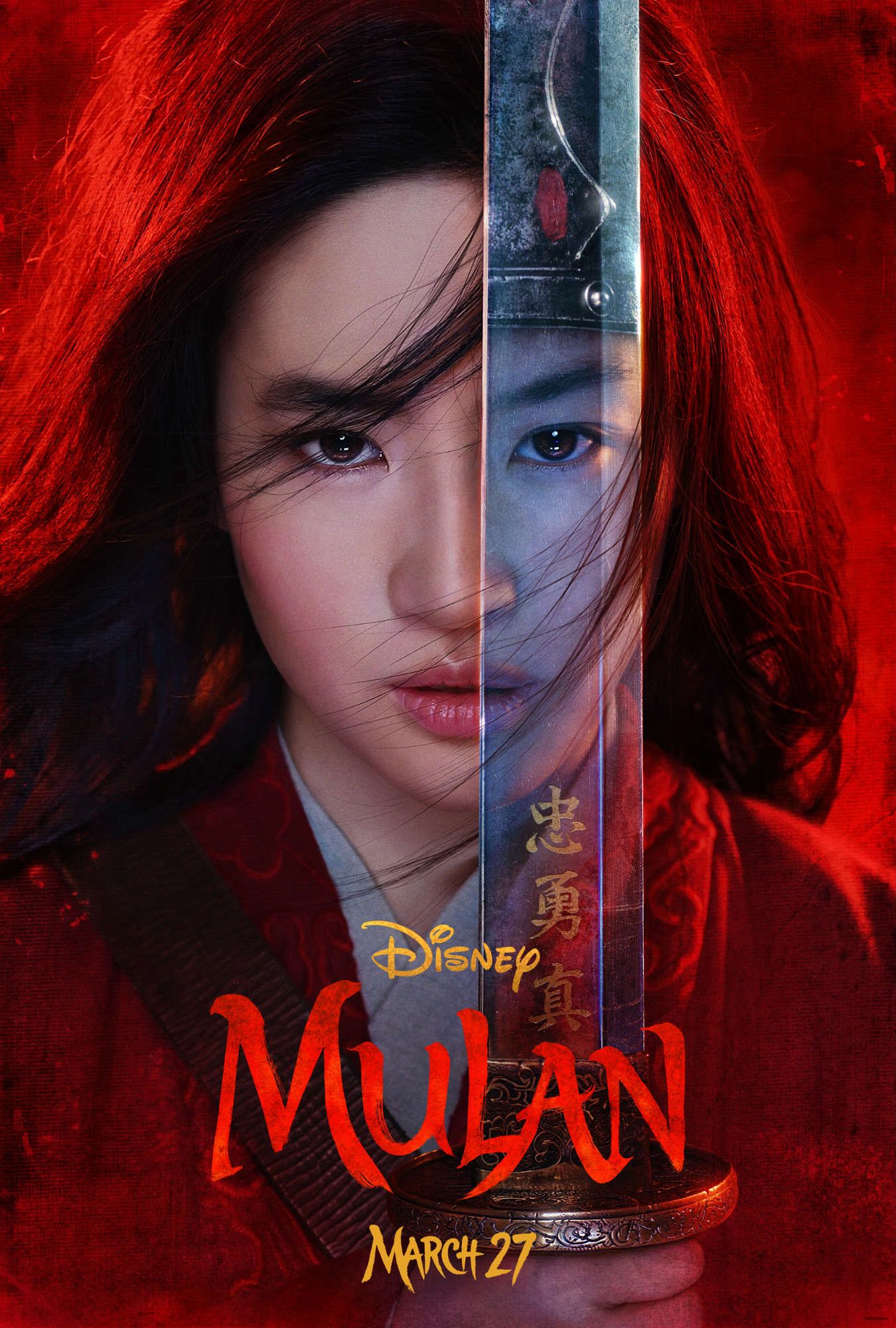Disney's Princesses are spread across the entire world. In fact, it's part of their appeal. From the rolling hills surrounding Belle's poor provincial town to Ariel's palace under the sea to the jazz-ringing streets outside Tiana's restaurant, the breathtaking locales on display in Disney Princess films truly add the magic. While the origins of many of these tales are difficult to decipher, it is clear that over the years Disney creators have drawn inspiration from around the world, igniting movie screens and imaginations for generations of fans.
The term "Disney Princesses" refers to a Walt Disney Company-owned franchise, established in the 1990s and including a roster of strong female characters from their various films. While the current roster of twelve characters includes women who are royal by birth and by marriage, there is a handful (such as Mulan and Moana) who qualify due to their heroism and the deep cultural impact of their stories. Importantly, not every royal qualifies for the list (for example, Frozen's Anna and Elsa are not official Disney Princesses) and the characters incorporated are thoughtfully considered and selected by the media franchise for reasons in line with marketing strategies and Disney's push for diversity within its various properties.
Despite Disney's fairly Europe-centric early entries, recent films introduced characters and characters from all around the world, a phenomenon reflected in the Disney Princess roster. Thankfully, with the inclusion and evolution of this official list, the franchise continues to diversify its roster and enable journeys to settings both familiar and fictitious. Here is a breakdown each official Disney Princess origins and where the Princesses are from in chronological order:
Snow White
For Walt Disney's first venture into feature-length animation, he drew inspiration from the classic Brothers Grimm tale Schneewittchen, which tells the story of a beautiful Snow White forced into hiding after her attempted murder at the hands of her cruel step-mother. Despite earlier iterations of the story including the Roman legend of the beautiful Chione (meaning "Snow") who was killed by a jealous Diana, the 1937 film Snow White and the Seven Dwarves undeniably draws from its Germanic traditions and aesthetics. While there are several differences between the original source and Disney's first princess movie, the costuming, architecture, and woodwork (including the many well-crafted cuckoo clocks featured in the Dwarves' cottage), all things point to Germany as Disney's first princess' country of origin.
Cinderella
Now to the first Princess to get a live-action Disney remake. Despite sources for the original Cinderella fairy tale that go all the way back to AD 860 with the Chinese story of Ye Xian, the story has received thousands of treatments over the centuries. Eventually, the tale was popularized in France with Cendrillon ou la petite pantoufle de verre, written by Charles Perrault in 1697. While the story later received an update and darker tone for the Brother's Grimm tale published in 1812, Walt Disney chose to borrow more heavily from the lighter French version, using the phrase "a nice chateau" in the film's prologue and the surname "Tramaine" as indicators for the setting. In Disney's princess franchise, this is the first representation of France.
Aurora
Although there is some debate on the home country of this exhausted princess, Sleeping Beauty was also likely inspired by the work of Charles Perrault. While France seems like a suitable guess, there a fewer visual identifiers and no references made to the French language, as in Cinderella. This, along with the borrowing of plot components from the Brothers Grimm tale - such as the princess's "Briar Rose" alter-ego, which originates in the later German version - points to Disney's utilization of Medieval and Art Deco styles to create a familiar, if not completely identifiable location. Yet, eagle-eyed viewers may notice many examples of the French fleur-de-lis symbol throughout the film's run-time, paying homage to France above any other country.
Ariel
Of course, much of The Little Mermaid takes place under the sea, but the location of Prince Eric's kingdom and the film's on-land action is hard to pinpoint. Looking to the original source penned by Hans Christian Anderson in 1837, one might think that Ariel's story is meant to take place in or off the coast of Denmark. However, the architecture of Eric's kingdom draws inspiration from Italian and southern France, while the many palm trees hint at a Mediterranean setting. While differences between the book and film already include alternate names and the Little Mermaid's much more tragic original ending (the prince rejects her and she turns into sea foam), the Disney film chose to create an amalgam of real-world locations for Ariel's adventure.
Belle
With a chorus of bonjour-shouting neighbors and names such as "Maurice," "Gaston," "Lumiere," "LeFou," and "Belle" - the French word for "beauty" - Beauty and the Beast locations draw much inspiration from the story's French origins. Initially published in 1740 by French novelist Gabrielle-Suzanne Barbot de Villeneuve, the story the filmmakers make important changes to Belle's character, leading to a more heroic character with more agency than her original iteration. Much of that has to do with her ability to step up to the beast and her self-sacrifice in return for her father's freedom.
Jasmine
For Princess Jasmine's homeland, the fictitious city Agrabah, which can be seen in Aladdin (both Disney's live-action remake and the 1994 classic film), creators left the setting of the original Chinese tale Aladdin and the Wonderful Lamp, opting for a kingdom set somewhere in the Middle East. While the exact location is up for debate, the Arabian desert kingdom is said to be near the Jordan River according to the film's narrator. Interestingly, the sultan's palace is reminiscent of the Taj Majal, located in the Agra region of India, while much of the city bears a physical resemblance to the city of Baghdad, Iraq's capital. The name "Agrabah" is likely a combination of the two names.
Pocahontas
Though Disney's version of Pocahontas is different from the real-life figure, both versions are well-known for their ties to the land surrounding the colonial settlement in Jamestown, Virginia. While Pocahontas does not hold the title of "princess," she holds the distinction of the Chieftain's daughter and, as such, became the first Disney Princess from what later became the United States.
Mulan
The first heroine sans actual royalty via birth or marriage, Mulan is based on the legendary warrior originally appearing in the Ballad of Mulan, an epic poem set in China's Northern Wei era (386-535). Particularly, the poem identifies Tuoba as the clan which Mulan protects while she joins the army disguised as a man. The Tuoba was an ancient Chinese clan ranged from what is now present-day Northern China and Mongolia. If the new trailer is any indication, it appears that fans of Disney's most honorable Princess will bring these breathtaking views to television screens around the globe on Disney+ with the Mulan live-action remake.
Tiana
Another story that is previously known for its Grimm rendition, The Frog Prince, Disney's 2008 retelling The Princess and the Frog is set in New Orleans in the early part of the twentieth century. Updating the original tale's spoiled princess as the independent, determined cook Tiana, the film uses the bright colors and jazzy sounds reflecting its Louisiana setting. While the differences between The Princess and the Frog and the original text are substantial, Tiana was a welcome addition to the Disney Princess lineup and a step toward a more diverse lineup of heroines.
Rapunzel
Set in the fictitious kingdom of Corona, Tangled is a loose retelling of yet another Brothers Grimm contribution. Though often noted for the apparent Germanic influences in the design, filmmakers drew several different architectural influences from Eastern Europe. In terms of the landscape, the hills seen in the film are reminiscent of northern Poland, a range that runs to the Baltic Sea. The shako hats worn by officers throughout the movie were originally worn in Hungary.
Merida
Pixar's first contribution to the Disney Princess lineup, Merida's adventures in 2012's Brave take place in the Scottish Highlands during the Medieval period. Brave incorporates elements of Scottish culture throughout the film: traditional Scottish dress including kilts and tartans, the appearance of the whimsical Will 'O The Wisps, and the incorporation of High Land Games (tug of war, archery, shot put, etc) into the film's plot. In addition, the carved standing stones we see Merida interacting with are visually similar to existing Scottish structures. In The Guardian's piece investigating the film's historical accuracy, these rocky outcrops are said to be most likely inspired by the real Ring of Brodgar on Orkney and the Callanish stones on Lewis.
Moana
The most recent addition to the Disney Princess roster, Moana's real-life inspiration draws from many elements of Polynesian culture and legend. Evident in the film's attention to detail (the creators hired several experts to help portray the culture respectfully), Moana carefully represents Polynesian architecture and design, particularly with the depictions of naval travel. Additionally, the demigod Maui is adapted from Polynesian legend and, just like in the movie, he uses his fish hook as the source of his powers.
For nearly a century, Disney has allowed its audiences to follow its many characters on journeys in places inspired by some truly breathtaking real-world locations. As the qualifications and diversity present within the Disney Princess lineup expand and change, fans will certainly continue to be treated to sights appropriate for the most spectacular of dreams. As fairy tales, legends, and myths continue to be extraordinarily valuable to their brand, Disney's commitment to diversity is noted and appreciated. Hopefully, with future additions to the Disney Princess roster children around the world will see themselves even more fully represented on screen.

